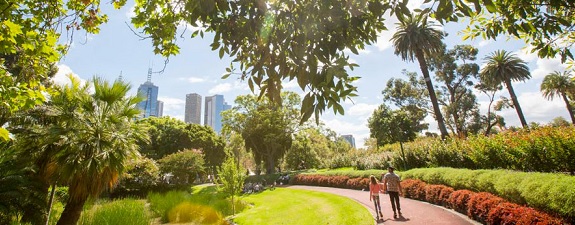
To quote the definition, “Parks and open space refers to land that has been reserved for the purpose of formal and informal sport and recreation, preservation of natural environments, provision of green space and/or urban storm water management.”
There are two categories of parks identified. First off are neighbourhood parks providing for regular local use and may include:
- small areas of open space that are accessible to local residents, generally providing for recreation such as children’s play and relaxation, which also can provide an identity and a sense of place for a community especially where it incorporates an important landscape feature or historic characteristic
- playing fields for organized sport (from 1ha to 3ha in size) which can also be used for walking and informal activities, and
- linear parks linking areas of open space. These often follow drainage lines or environmental corridors and can incorporate off road shared pedestrian and cyclist paths.
District and regional parks are larger and cater to the needs of a broader population. The types of parks may include:
- district playing fields that provide for a range of active, organized sport and recreation such as football/soccer fields, cricket pitches, tennis courts, baseball fields and the like
- waterfront and other regional parks for socialgatherings, such as picnics, recreation and education, and
- areas reserved for cultural or environmental retention(escarpments and areas of biodiversity value such as wetlands and bush land)that may provide some limited recreation opportunities, such as bird watching, picnicking and bush walking.
Open space often comes under pressure for development in existing neighbourhoods or is at risk of being undervalued and under provided in the planning of new subdivisions. However, in some cases a strategic assessment will identify a need to re orientate or rationalise existing open space to overcome past planning mistakes and to address access and maintenance issues.
The Benefits
An open space network should encourage more active lifestyles by offering a variety of safe and attractive spaces that are well distributed throughout a neighbourhood and are accessible and cater to the sporting and recreational needs of the community (Auckland City Council, 2007).
Public open spaces promote physical activity for the community and in turn, provided health benefits for the people and households. One study found that people who use public open spaces are three times more likely to achieve recommended levels of physical activity than those who do not use the spaces. Users and potential users prefer nearby, attractive, and larger parks and open spaces (Wolf, 2008).
More specifically, the benefits from participating in sport and physical activity include:
- Improved physical health and well-being – with reduced risk of lifestyle related diseases, higher survival rate of other diseases,improved quality of life and long term health, and, in young people and children healthy growth and development.
- Improved mental health – builds individual self-esteem and self-image, reduces stress, improves concentration and enhances memory and learning.
- Enhanced social outcomes – encourages social interaction and development of social skills, improves social networks and social capital, increases community cohesion and pride, safer communities.
- Reduced healthcare costs – improved physical health and the building of stronger families and communities helps lower health-care costs, reduces the costs of social intervention and plays a role in reducing crime and social dysfunction (WA Department of Sport and Recreation,2009).
Source: Healthyplaces.org.au
